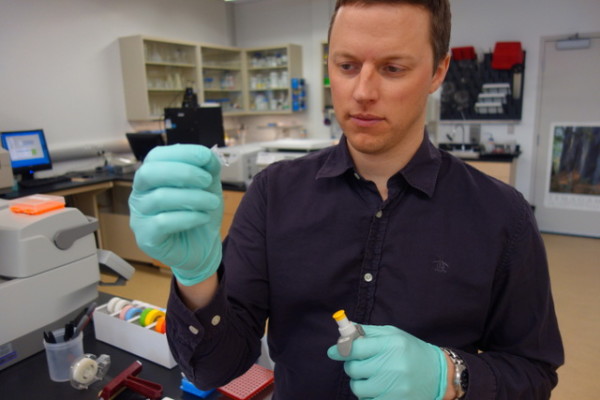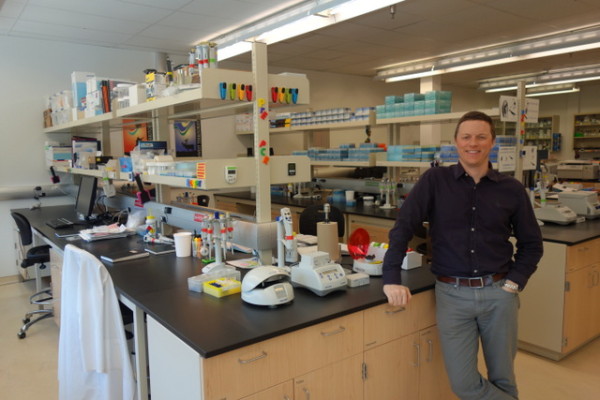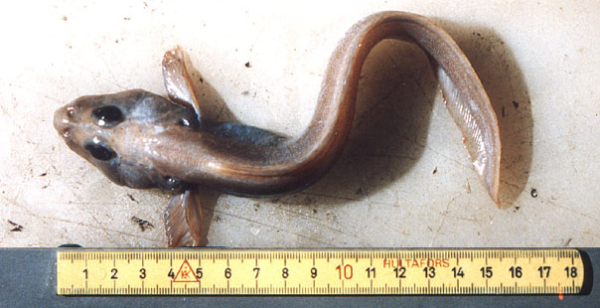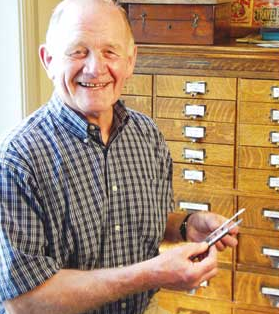Follow the Fish

I’m a Field Correspondent with an Arctic mission, but before I head north I’m looking around home for connections to the higher latitudes. Enter Roger Bull.
By the time I saw Lycodes paamiuti, an obscure fish dragged from the Arctic Ocean, it had been reduced to a droplet of clear liquid at the bottom of a plastic vial. That miniscule sample, 1/1000th of a tablespoon, contained small bits of DNA and big questions about the importance of biodiversity. I was at the finish line of a relay that had started far, far away.

A series of hand-offs began with a trawling net descending to 1500 metres below the surface of the Arctic Ocean in Davis Strait, between Greenland and Baffin Island. The net, set by a Greenlandic fisherman aboard the research vessel Paamiut (named for a town in southwestern Greenland), carried a jumble of treasure to the surface: coral, sponges, sculpins, small sharks, anemones, and in the words of ichthyologist Noel Alfonso “little crab dudes.”
While the ship heaved through heavy seas, that net’s worth of samples moved along a conveyor belt to Alfonso who worked in the hold, trying to identify all of the fish and to keep down his lunch. After 32 days, Alfonso returned to the Canadian Museum of Nature with some interesting luggage: new additions for the best collection of Arctic marine fishes found in Canadian waters and tissue samples for the museum’s DNA Man, Roger Bull.

Bull coordinates the museum’s Laboratory for Molecular Biodiversity, and he had already worked some magic on those samples by the time I visited.
The DNA Man had
- extracted the DNA,
- replicated a specific fragment in a thermal cycler (Bull has eight of these: four identified by pictures of the Golden Girls and four by the houses from the Hogwart’s School of Witchcraft and Wizardry),
- sorted it with electrical current to make sure the replication worked well,
- labeled it with fluorescent molecules, and
- fed it into a sequencer.

It’s called DNA barcoding; it’s a tried and true method, and for our Arctic fish, the result was this:
CCTTTATCTAGTATTTGGTGCCTGGGCCGGAATAGTTGGCACAGCTCTAAGCCTAC
TCATTCGAGCGGAGCTAAGCCAACCCGGCGCCCTCCTGGGAGACGACCAAATTTAC
AATGTCCTTGTTACAGCGCATGCGTTCGTAATAATTTTCTTTATAGTAATACCAATT
ATGATTGGGGGTTTTGGAAACTGGCTCGTACCCTTAATAATTGGGGCCCCGGACAT
AGCATTCCCCCGAATAAACAACATGAGCTTTTGACTCCTTCCCCCATCTTTTCTTCTC
CTCCTTGCCTCTTCAGGGGTAGAGGCGGGTGCCGGGACAGGATGAACAGTTTACCC
CCCTCTCTCTGGTAACTTAGCCCATGCAGGAGCCTCCGTTGATTTAACAATCTTCTCC
CTTCACCTAGCAGGGATTTCTTCAATCCTCGGGGCAATTAATTTCATTACGACCATCA
TTAACATGAAGCCCCCTGCGATTTCTCAGTACCAGACGCCCCTCTTCGTCTGGTCCG
TGCTCATTACGGCGGTCCTACTTCTCCTCTCTCTCCCCGTCCTTGCAGCTGGAATTAC
CATGCTCCTGACAGATCGTAACCTTAATACCACCTTCTTCGACCCCGCCGGAGGAGG
GGACCCCATCCTTTACCAACACCTG
This is a portion of the COI gene used to identify animal species. In DNA language, this block of characters means Lycodes paamiuti – fitting given the ship it was caught from.

This is the last station in the relay race that began with a net in Davis Strait, but what is its importance? Why catalogue the genetic code of all living things?
In Alfonso’s words,
“We don’t even know how many species are on the planet. And we need to know what these species are before we can know what they do, what they eat, where they are in the food chain. Many species look similar but have different ecologies. Also, we can’t manage them properly until we understand them.”
Bull takes a more philosophical route,
“The natural world is a library full of one-of-a-kind manuscripts. If we lose these combinations of genes, they will never be seen again.”
Museums have been collecting specimens for centuries. Some collectors were driven by curiousity, for others by religion, science or conservation. Today, some of that collection behaviour has a high technology factor. Bull’s lab has cyclers and a sequencer, large glass-doored fridges with labeled trays, pipettes at the ready, and a desk for computers that hold reams of genetic data.
It’s a far cry from field science, but the sense of wonder at the diversity of life is alive and well here. These days, anyone with internet access can look up the DNA sequences of organisms that have been studied in a lab like Bull’s.
“DNA holds the biodiversity that you can’t see,”
says Bull. In the case of Lycodes paamiuti it’s biodiversity that most people will never even hear by name, but it’s a piece of the north, and its one-of-a-kind manuscript lives on.






